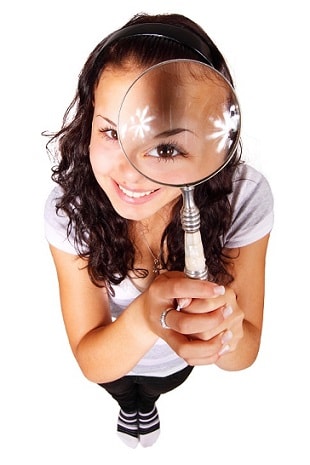What is Low Vision ?
?
When you have low vision, eyeglasses, contact lenses, medicine, or surgery may not help. Activities like reading, shopping, cooking, writing, and watching TV may be hard to do.
In fact, millions of Americans lose some of their sight every year. While vision loss can affect anyone at any age, low vision is most common for those over age 65.
Low vision is usually caused by eye diseases or health conditions. Some of these include age-related macular degeneration (AMD), cataract, diabetes, and glaucoma.
Eye injuries and birth defects are some other causes. Whatever the cause, lost vision cannot be restored. It can, however, be managed with proper treatment and vision rehabilitation.
You should visit an eye care professional if you experience any changes to your eyesight.
Signs of Low Vision
Low vision is often caused by these eye conditions:
- Age-related macular degeneration
- Cataracts
- Glaucoma
- Detached retina
- Diabetes
The most common types of eyesight loss that result in low vision include:
- Central vision loss, which creates a blur or blind spot in the center of your vision, but leaves your peripheral (outside of center) vision intact
- Peripheral vision loss, which leaves central vision clear, but makes it hard or impossible to see to the side or above and below your central line of sight
- Blurred vision, in which everything you see is blurred, regardless of how near or far away things are
- Extreme light sensitivity, in which even normal light causes your eyesight to wash out; you might even feel pain from exposure to normal light levels
- Hazy sight, which feels as though a film, fog, or glare is obscuring your eyesight
- Night blindness, in which you find it impossible to see outside at night or in darkened areas
If you think you might have low vision, test yourself while wearing your glasses to see if:
- You have trouble picking out clothing that matches, either by pattern or color
- You find it difficult to recognize the faces of friends and relatives
- Lights that should be bright seem dimmed
- You struggle to read street signs or make out the names of stores
- You have trouble performing up-close activities like reading, sewing, cooking, or home repairs
If any of these signs sound familiar, you should see an optometrist or ophthalmologist to have your eyesight evaluated.
Maximizing Your Remaining Eyesight
There are many devices available to help people with low vision overcome their vision problems, such as:
- Magnifying glasses or lenses. These are available as hand-held aids or are mounted in frames.
- Large-print objects. Books, newspapers, magazines, telephones, thermostats, remote controls, bank checks, and playing cards are just a few of the many household objects that can come with larger type for the visually impaired; many computers are capable of magnifying text and pictures with a simple keystroke.
- Talking devices. Watches, timers, and other household devices can be purchased in "talking" versions. Talking models of medical devices like blood pressure and blood glucose monitors are also available. Computer users can purchase screen-reading software that will read aloud words on a monitor. People can also purchase books-on-tape or borrow them from libraries.
To maximize your vision and make your home more livable, also consider these steps:
- Improve the lighting in your home.
- Shield your eyes when outside. Wear a wide-brimmed hat and sunglasses to protect your eyes from bright sunlight outdoors if you experience light sensitivity.
- Redesign your environment for better visibility. Choose colors that provide maximum contrast in your home to help you see objects better. For example, putting a dark light switch on a white wall will improve the visibility of the switch, and placing light tape on the edge of a dark-colored stairwell will help you avoid a fall. Eliminate carpeting and furniture with striped, plaid, or checked patterns, as they can be visually confusing.
- Use your other senses. Different textures can help you function around the house even with poor eyesight. For example, when you walk off carpeting onto tile, you'll be able to tell you've left the living room for the kitchen.
Sources:
Make your appointment today
To make your appointment, simply give us a call (760)-948-3345 or
or
Due to COVID-19 safety protocols, all eyewear services are currently by appointment only. Please call to make an appointment.
At Golden Eye Optometry, we view good vision care as front line protection at every age. A routine eye exam can detect more than poor vision. It can shed early light on glaucoma, macular degeneration, cataracts and diabetes.